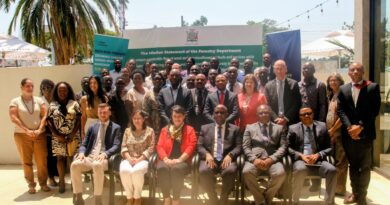Living Conditions Monitoring Survey 2022 Reveals Poverty Insights in Zambia
In a significant event, the Zambia Statistics Agency (ZAMSTATS), in collaboration with the United Nations Development Programme (UNDP), has released important poverty insights from the 2022 Living Conditions and Monitoring Survey (LCMS), conducted in June and July of the previous year. This survey also includes results on child poverty from multiple dimensions.
Remarks by Hon. Minister of Finance and National Planning, Dr. Situmbeko Musokotwane, highlights that the LCMS results serve several critical purposes. These include revealing the living standards of Zambia’s population, understanding how poverty is distributed, improving targeted support for the poor and vulnerable segments of society, evaluating progress toward national and global development goals, supporting research efforts to understand the country’s poverty profile, and, most importantly, guiding the formulation and implementation of policies.
It’s important to note that the impact of poverty on the well-being of the population takes time to become evident. To capture meaningful changes in Zambia’s welfare, LCMS surveys are typically conducted every two years. The previous LCMS was conducted in 2015, so the results presented today reflect developments in the country’s poverty and welfare profile over the past seven years.
The dissemination of this information will cover various aspects, including overall poverty statistics, inequality, and child poverty indicators, among others. These results will be instrumental in designing policies based on evidence to reduce poverty and improve the welfare of Zambia’s population, aligning with the government’s top priority.
This event is significant as it also marks the launch of the Second National Strategy for the Development of Statistics (NSDS2) for the period 2023 to 2027. The theme of this strategy is “Agenda for Transformation and Modernization of the National Statistical System.” NSDS2 is designed to address current data challenges, build statistical capacity, and adapt to new trends in statistical organization and management, including the use of innovative technologies and new data sources.
The development of NSDS2 and sector-specific statistics plans is a legal requirement under the Statistics Act. These initiatives aim to fill data gaps, improve the monitoring and evaluation of development programs, and support the reporting of progress on key socio-economic indicators.
The Zambian government expresses gratitude to local, regional, and international partners for their support, including the African Development Bank, in the development of these critical statistical initiatives. These efforts are essential for enhancing the country’s statistical capacity and advancing its development agenda.



